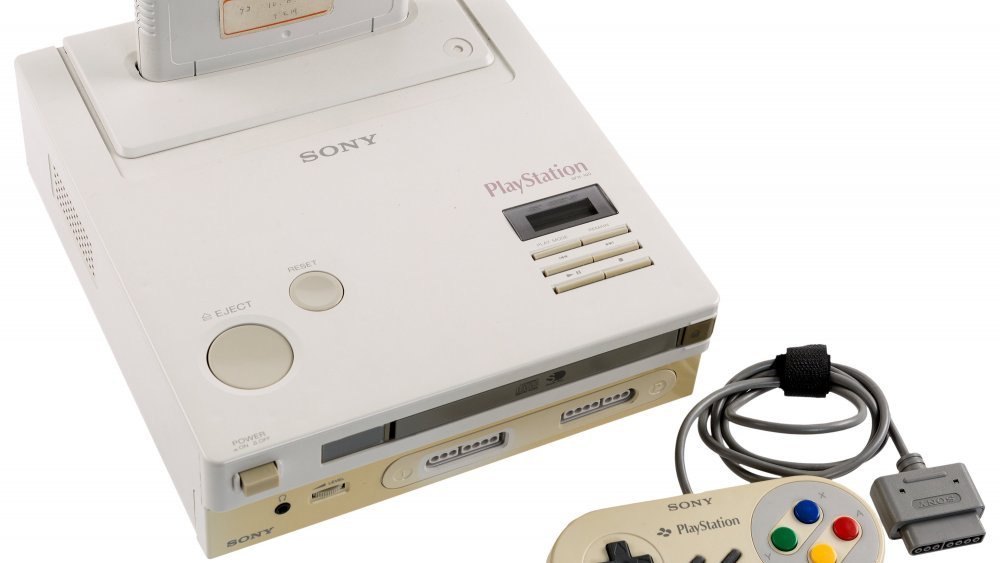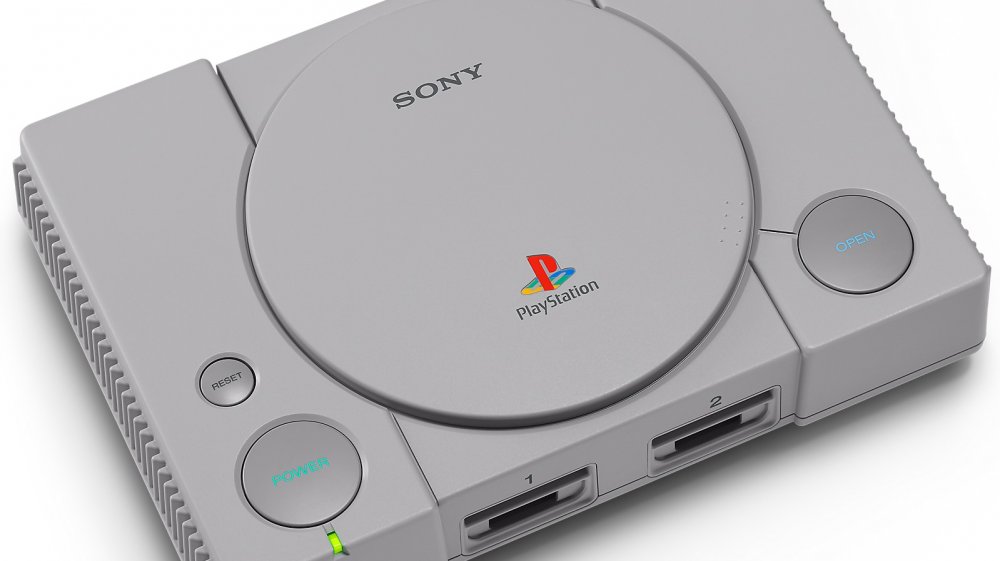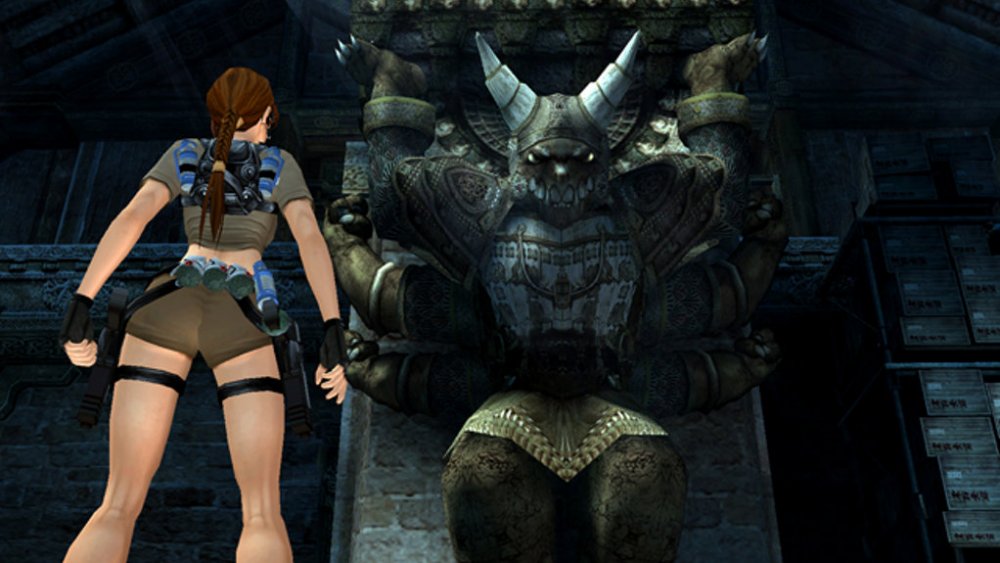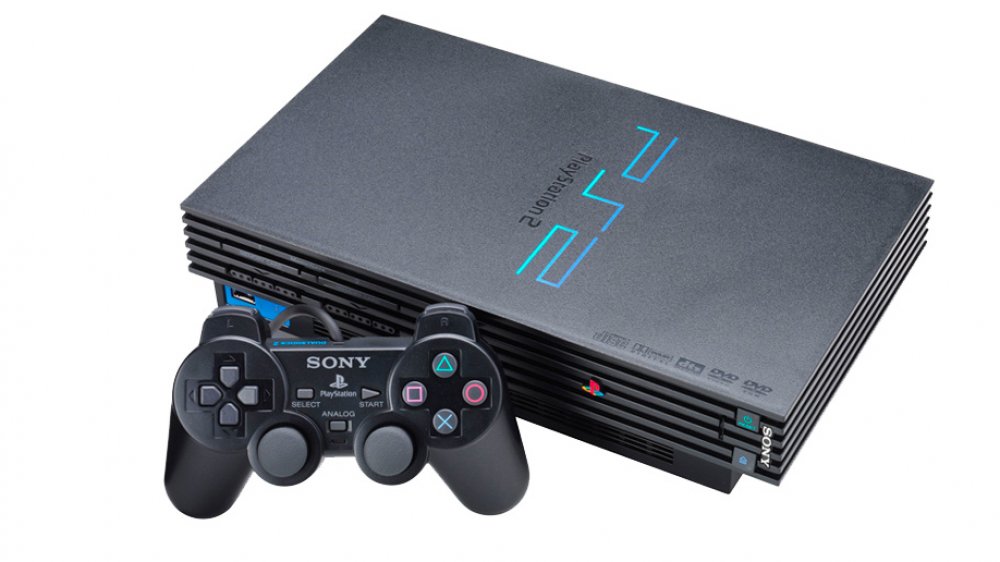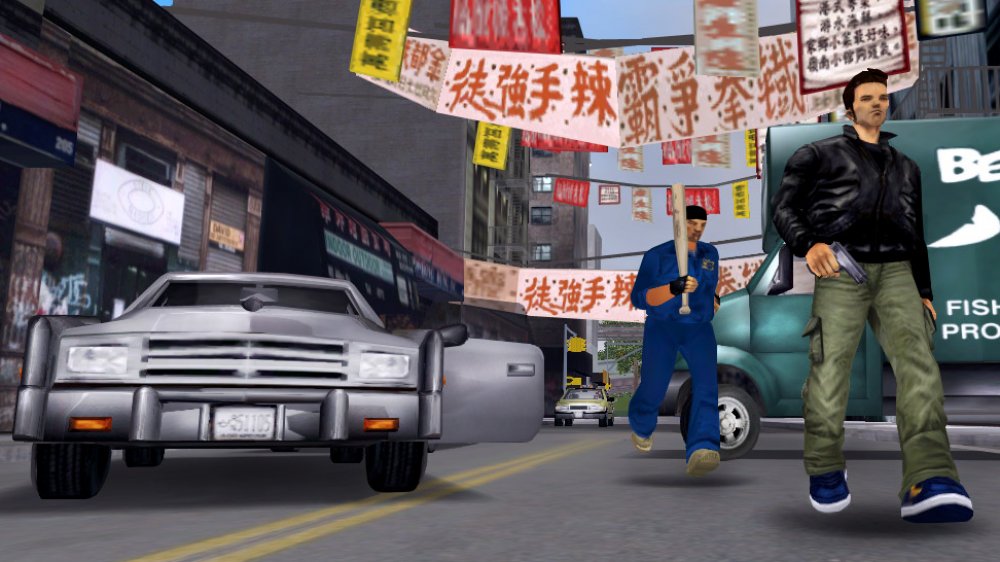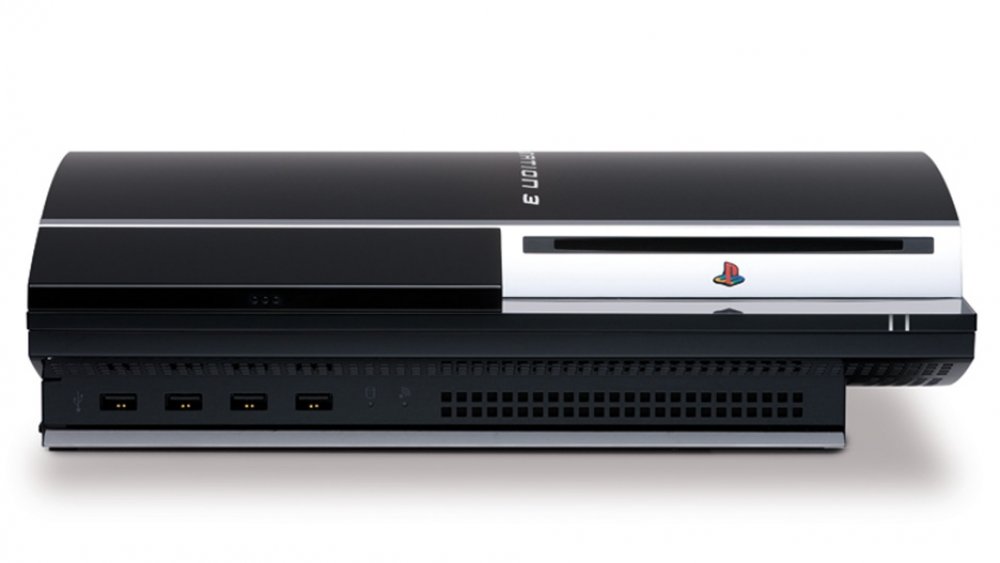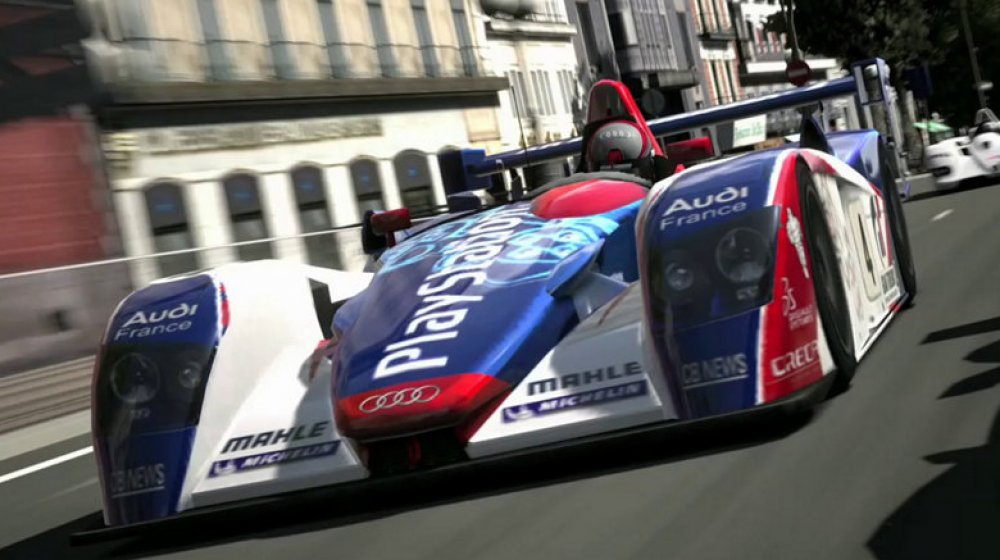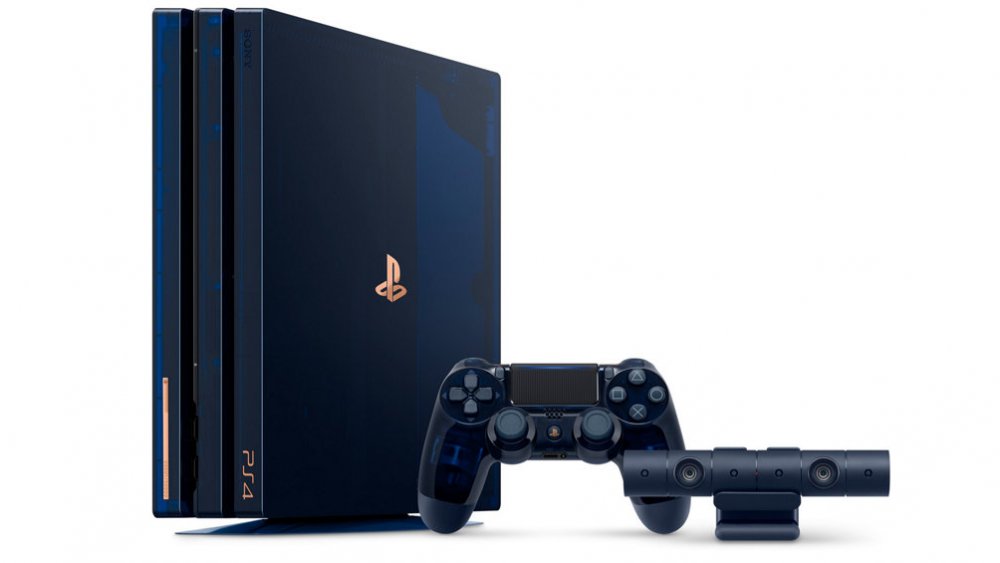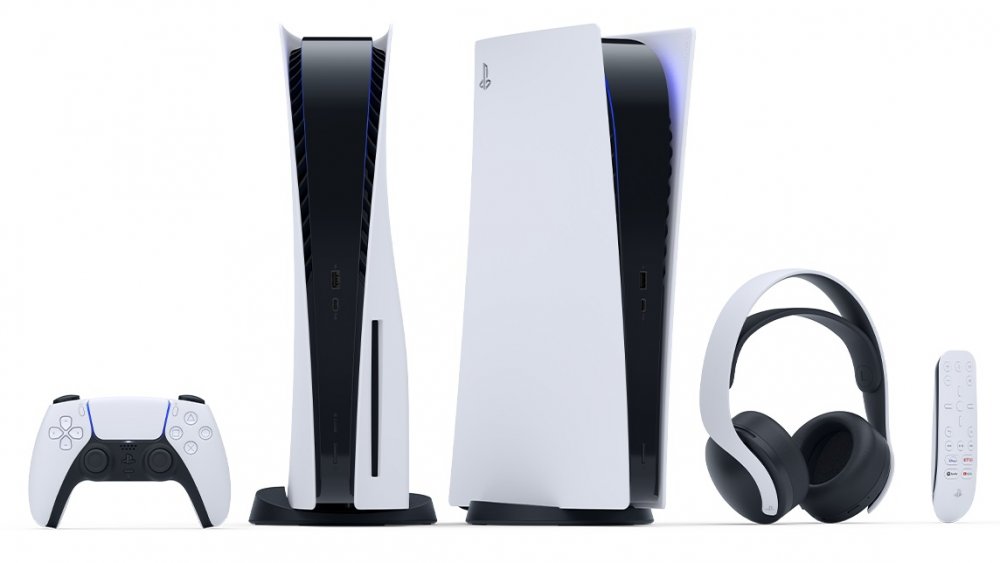The Stunning Transformation Of PlayStation
Ever since Sony entered the world of video games with the 1995 launch of the PlayStation, the company has been a dominant force in the industry. The original PlayStation helped demonstrate that 3D graphics could sell a more immersive experience and tell adult stories. Later entries in the PlayStation console lineup have only reinforced that.
While the first PlayStation was a significant step forward for the medium, looking back at the hardware itself and the graphics it produced can be a little awkward. The stunning, almost photorealistic images we take for granted took a lot of improvements. There have been five major updates to PlayStation technology, and each of those upgrades has received mid-lifespan improvements.
However, tracing that evolution reveals a great deal of how Sony and the video game industry itself have changed over the years. Let's take a look at that journey and follow the stunning transformation of PlayStation.
The Nintendo PlayStation
The PlayStation brand was born out of a famous failed partnership between Sony and Nintendo. When two of the biggest names in electronics in Japan teamed up in 1988, each had something the other wanted: Sony had excellent CD-ROM technology, and Nintendo had thriving gaming studios.
Nintendo was aware of the limitations of the cartridges it used, and Sony knew there was money to be made from CD-ROM based games. PC games, for instance, had already started utilizing CDs in place of floppy drives, allowing for higher fidelity audio and full-motion video.
The plan was for Sony to help Nintendo create two products: a CD player add on for the SNES and a standalone console that would play both CDs and Super Nintendo cartridges. The new console was going to be called the PlayStation.
The two companies worked on the project for three years, even producing multiple prototypes. However, Nintendo didn't trust its deal with Sony. At the 1991 Consumer Electronics Show, Nintendo debuted the PlayStation, and then announced it would be partnering with Phillips instead the next day.
The PlayStation arrives
After Nintendo betrayed Sony by partnering with Philips to produce a CD-ROM version of the Super Nintendo, Ken Kutaragi — the "Father of the PlayStation" — and Sony CEO Norio Ohga decided to go it alone. They began developing their CD-based console, keeping the name PlayStation, and the first PlayStation hit stores in Japan on Dec. 3, 1994.
The original PlayStation competed with the Super Nintendo and the Sega Genesis. It featured a top-loading, dual-speed CD drive, a one-core processor, and 2 MB of RAM with an additional megabyte for video processing. While these specs might seem quaint by today's standards, they delivered unprecedented 3D graphics to gamers TVs at the time. The original PlayStation controller didn't have analog sticks, either. Those first appeared on the first dual analog controller, later called the DualShock, released in 1997.
The PlayStation was a massive success and became the first video game consoles to sell over 100 million units worldwide. The original PlayStation also had a same generation follow up: the PS One. The PS One was released in July 2000, right after the PlayStation 2.
3D games thrive on the PlayStation
Sony tried to partner with Nintendo because Nintendo was a profitable game maker, and Sony was not. While Sony worked hard to secure third-party developers, the selection of launch titles when the PlayStation was somewhat lackluster.
There was enough content to prove the strength of the hardware, however. Ridge Racer was one of the standouts that showed that gamers could have 3D experiences at home that were once only possible at an arcade. Things improved by the time the consoles launched in North America and Europe, with games like NBA JAM Tournament Edition, Battle Arena Toshinden, and the console defining Rayman all available.
Things only got better from there. Reviewers praised the first Tomb Raider as a new benchmark for 32-bit 3D on its release and a definitive answer to the newly released Mario 64. The original Tekken set the standard for fighting games in the '90s, and one reviewer described Tekken 2's graphics as needing to be seen to be believed. Likewise, the original Gran Turismo raised the bar for racing games on consoles, both in realism and visual fidelity.
The PlayStation 2 dominates
The first PlayStation was a success, establishing Sony in the industry while helping gaming take a significant step forward, all while making a lot of money. Sony's second console arrived on March 4, 2000 in Japan. The competition was stiff this time around. Microsoft had entered the console wars with its highly-anticipated Xbox, and the PlayStation 2 would also have to compete against the already released Nintendo Gamecube and Sega Dreamcast.
None of that would be a problem. The PlayStation 2 became the best selling console of all time, shipping 155 million units over its twelve years of production and making the name PlayStation synonymous with console gaming worldwide.
The PlayStation 2 featured a futuristic all-black design and had 32 MB of system RAM alongside 4 MB of video ram. The console also had USB support and was backward compatible with PlayStation games. It also featured an updated DualShock 2 controller and, while still dependent on memory cards, had an optional 40 GB storage drive users could install.
Sony followed up the PlayStation 2 with a more compact version of the console, the PlayStation 2 Slim, in 2004.
PlayStation 2's massive game library
One of the things that drove the success of the PlayStation 2 was its enormous library of games. The US market alone had over 1,800 titles available by the time developers shifted their focus to the next generation of consoles.
The huge number of titles didn't dilute the quality of the very best games for the system. During the era of the PlayStation 2, games came out for the console that not only drove its popularity but forever altered the landscape of modern gaming. Grand Theft Auto 3 was described as a "videogame experience like few, if any, before it," and cleared the way for completely open worlds in games.
The PlayStation 2 also became a platform that showed that video games could express artistic intent alongside entertainment. A review from IGN said that trying to describe why Shadow of the Colossus was so superb was "akin to trying to describe why the bodies of work of Picasso, Bach or Beethoven."
The power of the PlayStation 2 provided a medium that allowed game developers to share beautiful and compelling worlds and stories with the masses in entirely new ways.
The PlayStation 3 stumbles
After a decade of dominating the console market, Sony prepared to launch its third major console: the PlayStation 3. Sony's new console featured a Blu-ray player at a time when stand-alone Blu-ray players cost hundreds of dollars. It packed in a complex and powerful seven-core cell processor with a clock speed of 3.2 GHz. Supporting that technology was an Nvidia graphics processing unit, 256 MB of RAM, a 20 GB hard drive, and full Wi-Fi capabilities. The DualShock 3 went wireless, and the PS3 launched with the new PlayStation Network.
These features should have given the PlayStation 3 a leg up over competing consoles like the Xbox 360 and the Nintendo Wii. However, all that advanced technology drove the console's price up to $599, which was $400 higher than its predecessor and much more expensive than those aforementioned rival machines.
This hurt initial sales, and although Sony adjusted the price first down to $499 and then to $399, the console never went on to dominate as its predecessors had. Despite its rocky start, though, the PS3 did well enough to warrant two updated versions during its lifespan: the PS3 Slim and the PS3 Super Slim.
The PlayStation 3 and the HD world
While expensive technology kept the PlayStation 3 from being the dominant console of its day, that same tech helped the console push graphics to an HD level. The console was more powerful than its most direct competitor, the Xbox 360, giving games a visual advantage on Sony's machine. This was important because during the PlayStation 3 era more high profile games saw releases for both systems and the PC as console exclusives became less popular among fans.
Those visuals got pretty impressive during this time. Rockstar, which had turned the world of video gaming on its head at the start of the 2000s with Grand Theft Auto 3, released the first game with its new RAGE engine, Grand Theft Auto 4, to universal critical praise. Gran Turismo 5 was even called photorealistic by enthusiastic fans.
Developers continued to innovate on the PlayStation 3 throughout its lifespan. One of the last games exclusively released for the system, The Last of Us, received extensive praise from mainstream media. The Guardian called the game "visually arresting, mechanically solid, maturely written and by turns heart-rending, tense, unnerving and brutal."
The PlayStation 4 and the era of streaming
After the disappointing launch of the PlayStation 3, Sony took notes and came back much stronger with the PlayStation 4 when it arrived on Nov. 15, 2013. The new PlayStation shipped with an x86 processor, like most gaming PCs at the time, as opposed to the multicore design that had frustrated developers on the PlayStation 3. The processor ran at 1.6 GHz, and was supported by 8 GBs of RAM and an integrated AMD Radeon GPU.
When the PlayStation 4 arrived, it had a much more consumer-friendly price tag of $399. The console was designed from the ground up to support social gaming and streaming. The redesigned DualShock 4 controller emphasized these new priorities, replacing the Start and Select buttons, standards on the console for three generations, with Share and Options buttons.
Like all of its predecessors, the PlayStation 4 received a few hardware revisions. These were the PS4 Pro and the PS4 Slim, both of which launched in 2016.
Strong hardware opens new worlds
The powerful and flexible hardware inside the PlayStation 4 gave developers the chance to build some truly stunning games. Games released late in the system's life cycle, such as Death Stranding, proved that the well-designed console could stay visually competitive right up to its replacement by the PlayStation 5. The game was described as art by one reviewer, and other critics praised the visuals alongside the haunting world and inventive storytelling that the game presented.
Open worlds got even more expansive during the PlayStation 3 era. Red Dead Redemption 2 was another Rockstar title that caught the eye of mainstream critics. A writer for the Washington Post called the game "jaw-dropping on every level," in the title of his review and heaped even more lavish praise on the game throughout the article.
It wasn't just later lifecycle games that received kudos for their visuals. The Witcher 3, a fantasy open-world RPG released in 2015, was described as "one of the most gorgeous games we've played," by a reviewer for Digital Spy. Overall, the PlayStation 3 delivered top-notch graphics and experiences for the entirety of its run.
The PlayStation 5 is the future, for now
The PlayStation 5 launches on Nov. 12, 2020, and will be the first Sony console to launch with two separate versions. The standard PlayStation 5 will include a Blu-ray disc drive and retail for $499, while the Digital Edition PlayStation 5 — which is the same minus the disc drive — is priced at $399.
Inside the PlayStation 5 is an eight-core AMD Zen 2 CPU, a custom AMD Radeon RDNA 2 GPU, 16 GB of RAM, and 825 GB of SSD storage. The controller has been reworked and rebranded as the DualSense, and the pad features adaptive triggers with haptic feedback capabilities, promising a new level of engagement for gamers. The Share button on the DualShock 4 has been swapped out for a Create button, although Sony has not gone into great detail about what the different will be.
The console will feature some stunning exclusive titles, including Marvel's Spiderman: Miles Morales, Horizon: Forbidden West, and Godfall. Overall, the PlayStation 5 looks poised to impress gamers worldwide, and could maintain the high standards Sony has set for itself and the videogame industry since 1994.


